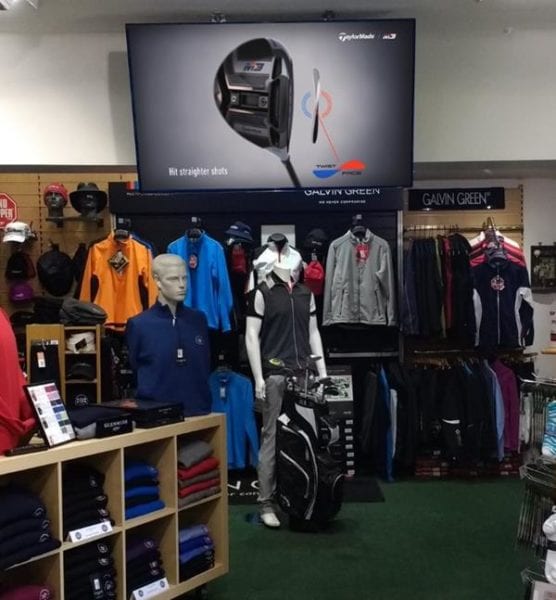While Foremost is celebrating that more than 200 members have already chosen to install the upgraded Elite Marketing Programme (EMP) video monitor solution, I would like to share with you how augmented reality experience is transforming the retail industry.
When Foremost launched in 2016, the above-mentioned Elite Marketing Programme (EMP) video monitor solution, I have already highlighted the importance of the understanding of ‘showrooming’ by experimenting on augmented reality (e.g. virtual fitting rooms).
Augmented Reality experience in golf retailing
For many years we used interruption marketing to build awareness and interest for our products services. Unfortunately, there still many marketers and retailers who are using this technique.
However, we should pay attention to the fact that our customers want to have is highly relevant, timely offers, products, but unique retail experience as well.
Instead of bombing our customers in pro-shops and in other golf retail outlets with product messages, we should think about how could we come up with highly relevant, meaningful retail experience for them.
I see as one of the big benefits of augmented reality technology is that it enables retailers to come up with one-on-one communication with their customers and at the same time to provide quick and convenient shopping experience.
I am convinced that your golf customers would appreciate if you could help them for instance:
- in the ‘trying on’ process;
- finding the most relevant brand, product to their needs, goals, desires, and expectations;
- customization of golf equipment (I know in many pro-shop it is a default service, but it is important to list it here.)
This is why I have a doubt of the efficiency of the above-mentioned POS communication solution.
We should also embrace and understand how technology has changed the way we buy products (e.g. connected home devices, virtual reality, streaming television services, voice ordering, and drones).
At the same time, technology also made shopping easier and integral part of our everyday life. Walker Sands’ Future of Retail 2017 study found:
- Nearly a quarter of consumers (24 percent) own a voice-controlled device like Amazon Echo (16 percent) or Google Home (6 percent).
- The majority of consumers (65 percent) have mobile shopping apps on their phones, and two-thirds have made a purchase through a mobile app (66 percent).
- More than one in four consumers (29 percent) report that they always or often shop via mobile app, and 38 percent regularly shop on mobile websites.
- Consumers say unique experiences will cause them to shop more in physical stores, including food and beverage offerings (30 percent), a more personalized experience (18 percent), live product demonstrations (18 percent) and entertainment (17 percent).

This is why I thought to highlight how you can use augmented reality to provide an exceptional golf retailing experience that will attract more customers, but also generate buzz about your pro-shop or golf retailing outlet.
I am sure that some of you have already come across with:
- IKEA’s popular augmented reality (AR) furnishing app (The IKEA Place) or
- Wayfair’s ‘Shop All Things Home’ app or
- Target‘s “See It In Your Space” or
- Amazon.
Yes, these are all examples from the furniture retail sector, but they are demonstrating a great understanding of today’s customers’ needs and expectations. At the same time, they will be also attractive and relevant to the Millennials as well.
We can also use augmented reality technology to:
- co-branded augmented products with shelf-talker callouts and
- instant coupon delivery based on AR actuation.
- bring back fun and excitement into it stores woo shoppers.
Apple’s ARKit and Google’s ARCore turned this visualization technology into the mainstream. They also help increase conversion, average order values, but also to drive customers into physical stores.
Such apps can enable retailers to deploy shopper-driven, individualized in-store experiences.
Another study made by DigitalBridge found that 74% of customers are expecting retailers to use ARKit to develop augmented reality tools.
The above-mentioned insights and examples show us what are the benefits of creating augmented reality experience for our golfer customers. Although we rarely speak about how augmented reality can contribute to brand building.
By providing augmented reality tools for our customers, we are not only helping them but also expressing that we are customer committed. This is really important in the experience economy.
